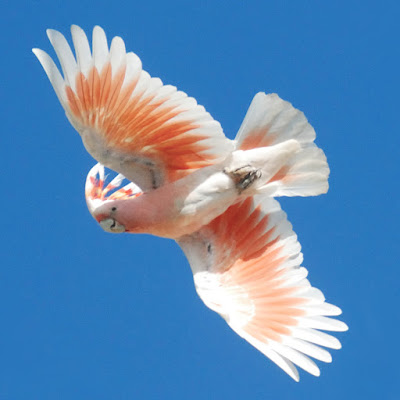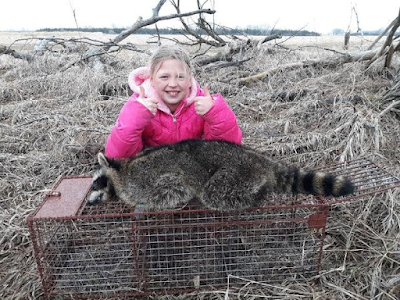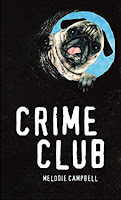He probably knows which dogs on the block are already out in their yards, and which females are in heat. He knows if a black bear invaded our territory in the night. He knows if rabbit marauders have menaced the tomatoes since his last patrol, even if he doesn’t feel compelled to let me in on the secret. He knows if a local possum is returning to her den after a night of munching ticks.
In the words of a beloved dog psychologist, when a dog sniffs anything—the air or another dog’s butt—he is reading the local paper.
When humans sniff, we are breathing—actually taking air into our noses and into our lungs.
With dogs, breathing is optional. They can choose to route some of the air they’re inhaling to their lungs, and the rest to their snouts. They can move each nostril independently, to better detect the direction a scent is coming from.
Once they know the direction, they can turn their heads and begin their process of evidence collection. Long snouts mean more real estate for sensors. Scent-containing particles are inhaled and travel down long bony plates that are covered with spongy membranes containing olfactory receptors. Molecules stick to those receptors, Prof. Coren says, like Velcro.
When we exhale, everything we’ve just sniffed exits our nostrils and we have to sniff again if we want to know what’s going on stinkwise.
By contrast, dogs can “lock” their noses to keep what they’ve just inhaled inside, while they sniff up some more. In this way, the more particles they collect, the more they can build a mental picture of what they are smelling.
Dog brains are smaller than human brains, but the amount of their gray matter that is devoted to the sense of smell so far outclasses us that we are forced to admit that the dog was designed by nature (and humans) to be a smelling machine, 10,000 times better than us.
Oh, you scoff, but humans are great sniffers too! What about those perfume testers and wine experts? Well, sure, those high-paid “noses” have trained themselves to pay close attention to what they are smelling. They might even be genetically blessed with a better-than-average human nose. But in the end, biology fails them.
You know how you can tell when sugar has been stirred into your eight or twelve-ounce cup of coffee? One sniff is all it takes. Yay you, human!
Dogs can smell that teaspoon of sugar too—even when it is dissolved in a million gallons of water. That is the equivalent two Olympic swimming pools.
But go ahead, wine snobs. Tell me how you can smell notes of chocolate and tobacco in your cab.
Because of the way humans walk, placing our heels down before the balls of our feet, and because we ooze six milliliters of sweat an hour from the bottoms of our feet, a trained canine can determine the direction the suspect was heading based on the freshness of the scent left behind. Despite what you’ve seen in the movies, the only thing that destroys that scent trail is UV light and time.
But even there, dog time is not human time. In one study, scientists pressed their fingers all over a set of lab slides, then left those slides (along with control sets) exposed to the elements on the roof of their academic facility. After six months, dogs in their study could still tell which rained-upon slides were manhandled by humans, and which were not.
When dogs are working, they use other organs to feed their Schnozzola command centers. You may have become disgusted, for example, to spy your dog licking some sidewalk ooze on your daily walk. They’re actually doing the same thing the human wine expert is doing, trying to get some of that road stink into their mouths, mixing with their saliva, and sliding the resulting mix past the bulb of sensitivity located in their mouths known as the vomeronasal organ. It’s the pipeline from the mouth to the nose to the brain. In most humans, the VNO is vestigial.
In the dog, slobber and wet noses help perform critical work. All that wetness keep molecules and pheromones slip-sliding around the dog’s nose and palate, permitting careful analysis of damning eau de squirrel.
Dogs were the first animals early humans domesticated, long before cows, sheep, goats, horses and chickens. But scientists still argue about the details of our inter-species meet-cute. For a long time, we thought dogs were descended of modern gray wolves; now we know that’s not correct. Dogs probably descended of a now-extinct creature known as the Pleistocene Wolf.
One theory is that wolves followed nomadic humans from place to place, feasting on the remains of animals humans hunted and killed. When humans invented agriculture and planted themselves in one spot for a longer period of time, wolves would have regularly visited still larger human dump sites. At some point, humans adopted some wolves and begun breeding them selectively for traits that mattered to the humans.
It’s a testament to human sentimentality that we bred dogs to have traits not otherwise found in nature. Seriously—wolves do not have facial muscles that allow them to do this:
 |
| Seeming to smile. |
Approached by early humans, wolves would have either attacked or fled, as most animals do. Then how did these predators come to trust humans enough to live and breed in their camps?
Theories abound. Maybe the humans adopted defenseless wolf puppies. Maybe there was an offshoot clave of Pleistocene wolves that were less aggressive and thus willing to accept humans as their providers. (Even today an isolated Arctic wolf colony on a remote Canadian island appear unafraid of humans because they see us so infrequently.)
In captivity, many species lose attributes that they had in the wild. (This accounts for the drop in the dorsal fins of orcas who perform in aquariums.) When wolves became dogs, their ears became floppy, their tails curled, their faces became cuter, and they became incorrigibly playful for life.
Wolves, by contrast, are stone cold killers. After puppyhood, a wolf is all business. And except for a few chuffs and whines, they are silent as they sight and attack prey. But if you’re an early human, it’s very useful to have your designer wolf sound an alarm when invaders approached. Savvy bipeds bred only the most vocal camp companions.
Alone, humans could only run so fast. It was tough work to chase and kill game with stick, stone, horn, and bone weapons. But if your hunting partners can run fast, sink their teeth into the ungulate or ursine you are chasing and run them to ground, the battle is half won. It helped, too, that these new furry companions heard well, saw in the dark, were willing to accept direction, and would even forgo feasting on the kill until humans had had their fill.
Millennia have passed, and they are still at our sides. The perfect partnership, you might say, between two meat-eating predators. It’s only when you count the number of breeds that you realize how many ways humans have shaped this animal’s body to perform a specific task we needed done.
We’ve got hunting dogs, herding dogs, and working dogs bred to perform beast-of-burden labor when horses were beyond the means of simple folk. The original dogs raised by the St. Bernard Hospice monks learned their skills so well that they could teach the next generation of puppies to perform search-and-rescue work without human intervention and training.
There are nearly four hundred breeds on the planet, maybe more. You look at a Great Dane and a Corgi and a Chihuahua, and they look nothing alike. But under the skin, they are descendants of that same wolf.
And yes, cats do have a strong sense of smell, perhaps as good as some breeds of dogs. In academic studies, cats have proved remarkably good at detecting human cancers. But cats will never be the people pleasers that dogs are, and fleeing suspects have never frozen at the thought of being mauled by a law enforcement feline, unless of course they were Maine Coons.
We must also consider that cats are solitary hunters while dogs and humans are pack animals.
One of my favorite dog books is Dogland, by journalist Tommy Tomlinson, who spent three years attending more than 100 dog shows to understand the canine-human bond. He’s a Southern writer, so I’ve seen him speak more than once at various local book events.



















